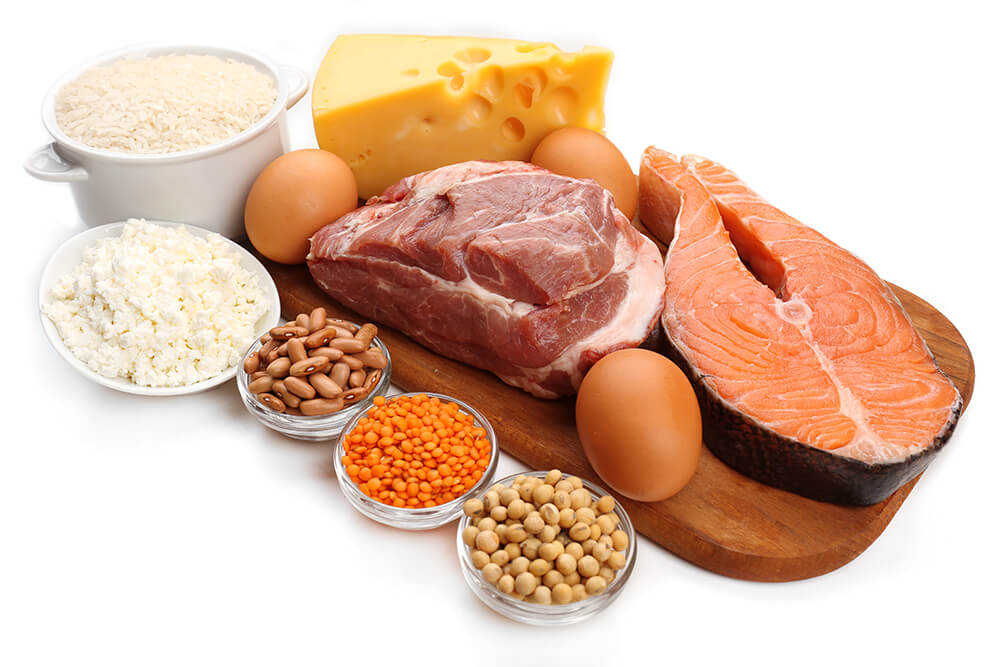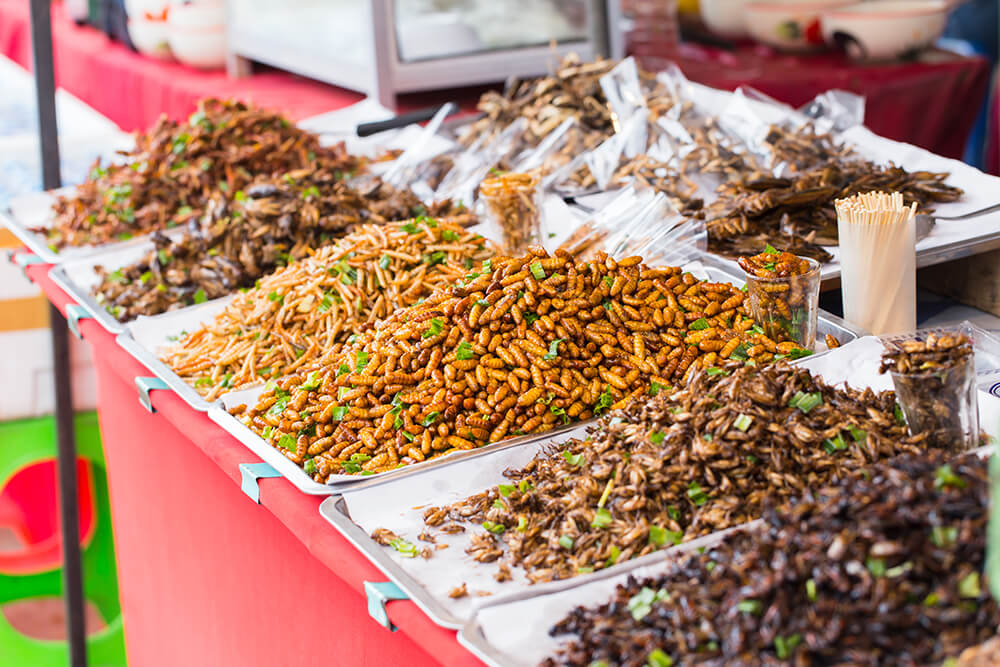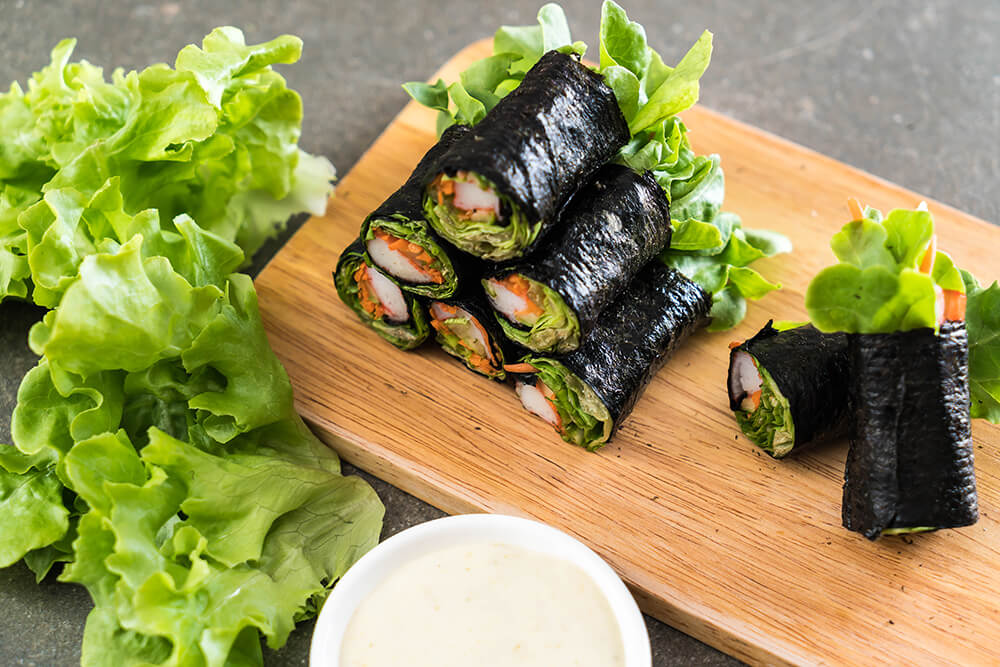
Rising world population along with environmental pollution and climate change have revealed much debate. Accordingly, the European Union (EU) aims to use its resources more efficiently and reduce greenhouse gas emissions in order to secure the future of food and the environment. As livestock industry generates large amount of greenhouse gas emissions, reducing the consumption of animal products and increasing agricultural practices are two major targets. The EU suggests replacing meat, fish, other sea foods, and basic animal protein sources such as milk and eggs with more sustainable food alternatives. Another option is to increase the production and consumption of plant-based protein sources such as legumes or soy products. In addition, the consumption of "new" protein sources such as insects and seaweed is also on the EU's agenda. While insects and seaweed are consumed as food in many East and Southeast Asian countries, these food alternatives are new and unusual for Europeans. The discussion should include why these new protein sources should be consumed by European consumers and how potential obstacles such as legal regulations and marketing strategies can be overcome.
Edible Insects
 Researchers say that shifting to insect farming to produce the equivalent the amount of protein provided by conventional livestock would reduce greenhouse gas emissions and the consumption of natural resources. It is estimated that 1,400 insect species are edible. Their habitats include aquatic ecosystems, forests, and cultivated land. In terms of nutrient composition, edible insects are said to be a potent source for quality protein and fiber. Vitamin and mineral content of edible insects varies by species, growth stage, and food used
Researchers say that shifting to insect farming to produce the equivalent the amount of protein provided by conventional livestock would reduce greenhouse gas emissions and the consumption of natural resources. It is estimated that 1,400 insect species are edible. Their habitats include aquatic ecosystems, forests, and cultivated land. In terms of nutrient composition, edible insects are said to be a potent source for quality protein and fiber. Vitamin and mineral content of edible insects varies by species, growth stage, and food used
Many types of edible insects are safe for human consumption and do not pose any health risks. However, edible insects may contain biological or chemical contaminants, depending on the farming method. It is important to assess farming and feeding conditions. For instance, food waste is not currently used as a feed for edible insects, but if it should happen, further research is required on how it effects the insects' nutritional composition and concomitant content.
Seaweed and Edible Aquatic Plants
 Algae, a type of seaweed, is classified into two groups: micro and macro. Seaweed can reproduce much more quickly than conventional plants. Algae are a richer source of minerals like calcium, iron, and copper than soil-grown plants.
Algae, a type of seaweed, is classified into two groups: micro and macro. Seaweed can reproduce much more quickly than conventional plants. Algae are a richer source of minerals like calcium, iron, and copper than soil-grown plants.
Seaweed is one of the typical foods in Japan and Korea. It can be harvested directly from the sea or cultivated at farms. Some types of seaweed have a richer protein content and contain less fat than others. On the other hand, all seaweed species are good sources of vitamins, minerals, and important amino acids. Moreover, it is said that they are a good source of B12 vitamins for vegetarians and vegans. The number of edible insect species with low B12 content is also very high.
Seaweed can be used in sushi, pasta, smoothies and salads. Micro algae are usually used in the production of dietary supplements.
Another aquatic plant, water lentils, or duckweed, are mainly used as food for pets. It is added to soups and salads in Asia. Beaked tassel weed has been drawing attention recently as a protein source. When dried, it can contain up to 40 percent protein.
New Plant-Based Protein Sources
 The canola plant is generally used to produce oil. After the oil is extracted from the canola seed, the remaining dry matter contains up to 40-percent protein. Canola, also known as rapeseed protein, is produced from rapeseed and has long been used as food source for animals. Its use for humans is restricted due to potential pollutants it may contain and its unwanted organoleptic properties such as unpleasant taste, flavor, and smell. In order to increase colza seed consumption, its organoleptic properties should be improved. Processing methods that can detect contamination and pollution levels are should be required.
The canola plant is generally used to produce oil. After the oil is extracted from the canola seed, the remaining dry matter contains up to 40-percent protein. Canola, also known as rapeseed protein, is produced from rapeseed and has long been used as food source for animals. Its use for humans is restricted due to potential pollutants it may contain and its unwanted organoleptic properties such as unpleasant taste, flavor, and smell. In order to increase colza seed consumption, its organoleptic properties should be improved. Processing methods that can detect contamination and pollution levels are should be required.
The Protein2Food project, funded by the EU, aims to enhance the quality and quantity of proteins from plant-based sources that are already in widespread. These include grains like quinoa, amaranth, and buckwheat, and legumes that are rarely used such as broad beans, chickpeas, and lentils. The project also aims to produce foods that are more adaptable to European climate and land. Another goal is to produce plant-based foods like bakery products, breakfast cereals, and pasta to replace animal-based proteins. The quality of these high-protein products can maximized through improvements in production, cultivation methods, and technological developments.
What are the obstacles to adopting new plant-based sources and how can we overcome them?
The nutritional composition of insects and seaweed cannot be underestimated when compared with fish and red meat. Community should be informed about the environmental impact of meat production and encouraged to consume these new protein sources. European consumers view the human use of insects as food, or entomophagy, with disgust. They tend to associate eating insects with pests, bad hygiene, and unpleasant taste.
The EU's legal regulations regarding insects, seaweed, and other new protein sources may be confusing, but EU member states are discussing about harmonization of legal regulations. For instance, compatibility of all insect species with the definition of "new foods" define above and their potential health risks should be discussed. Under EU regulations, any food that was not habitually consumed prior to May 1997 is considered to be a novel food. More data are required in order to create legal regulations regarding the consumption of new food products in Europe.
Conclusion
Replacing meat consumption with new protein sources offers the potential to improve the sustainability of food sources across Europe. Legal regulations and overcoming negative consumer perception are important factors in making use of these new protein sources. How this negative consumer perception can be changed? How can people be made aware of and urged to consider innovative food choices? What are the ways to encourage individuals to change their meat consumption habits? These questions are still unanswered.
References
1. http://www.fao.org/news/story/en/item/197623/icode/
2. http://www.ipcc.ch/ipccreports/tar/wg3/index.php?idp=115
3. http://www.fao.org/docrep/018/i3253e/i3253e06.pdf
4. https://www.slu.se/globalassets/ew/org/centrb/fr-lantbr/publikationer/insects_as_food_2015.pdf
This article is translated from EUFIC publication on “Sustainable protein: Meeting future needs” (http://www.eufic.org/en/food-production/article/sustainable-protein-meeting-future-needs ) by Sabri Ülker Foundation.


